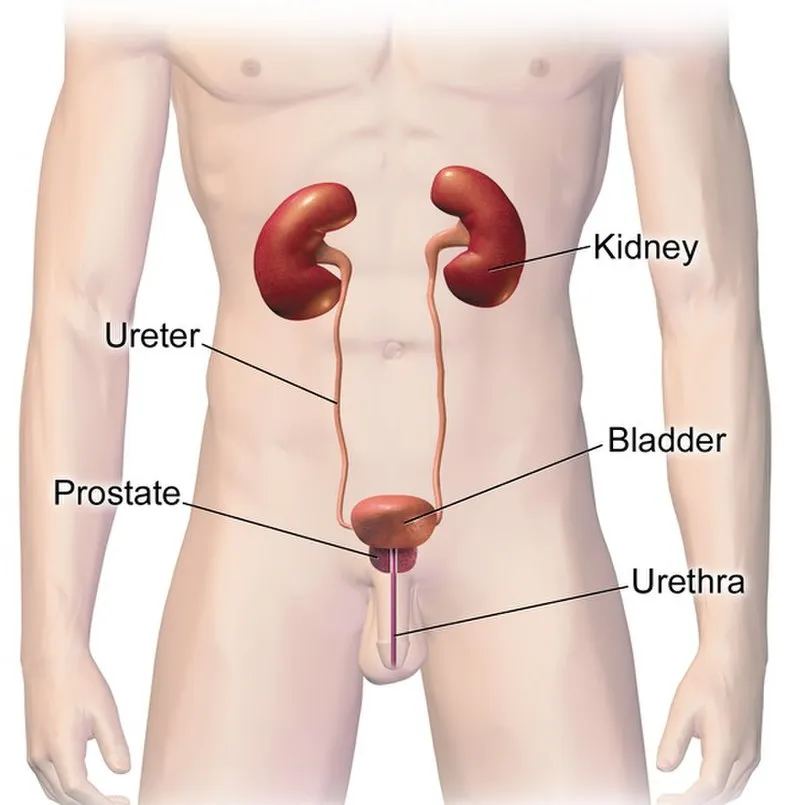Welcome to another interesting episode of our scientific workshop series where we reveal those agents that are opposing your survival and good health status as an individual. Over the last weeks, we have been revealing a lot of parasites that were isolated from patients' samples. If you have been following the series, you would agree with me that it has been an interesting moment viewing images of these parasites that cause several diseases of human importance.
Today's expository will also take another dimension as we reveal those substances that are known to be associated with several diseases in humans. Urine happens to be a very important fluid that can give a whole of information about our health. By analyzing the urine, you have an idea of how healthy major organs like the kidney, liver, etc. are. Similarly, other fluids, tissues, and cells can also be analyzed to determine their status. We will begin with an introduction to the urine constituents and then as time goes on, more will be discussed.
Introduction
The urinary system's function is to filter blood and create urine as a waste by-product. The organs of the urinary system include the kidneys, renal pelvis, ureters, bladder, and urethra. The body takes nutrients from food and converts them to energy. After the body has taken the food components that it needs, waste products are left behind in the bowel and in the blood
The kidney is mainly responsible for clearing toxic metabolites from the body system. The renal clearance of the kidney is mostly made up of liquids in which solutes are dissolved. The functional unit of the kidney that is fully involved in this excretion is the nephron.
Problems could ensue when the urinary pathway from the kidney is blocked by kidney stones - excess mineral filtrates that have accumulated over time and the most common one is the calcium stone, usually made up of both calcium and oxalate (oxalate, a very common natural chemical that is found in most food we consume), calcium phosphate, struvite stones (formed when you have a type urinary tract infection that allows a bacteria to produce ammonia that over time accumulate in the kidney) and Urate crystals from uric acid.
Bacteria infection of the urinary tract is also another cause of renal disease in humans. As this disease progresses, they cause significant damage to the epithelial lining of the ureter and urethral tract. These cells and metabolites when seen in the urine usually give an indication of one disease condition or the other. Diseases associated with the urinary tract are referred to as urinary tract infection (UTI) and they are mostly caused by pathogens e.g. bacteria, protozoans, viruses, etc.
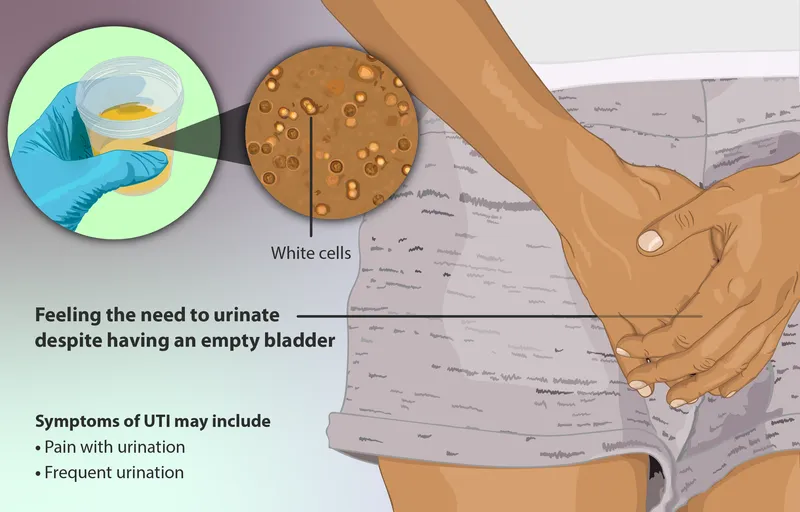 Depiction of a lady who has a Urinary Tract Infection (UTI)
Depiction of a lady who has a Urinary Tract Infection (UTI)
The kidney is selective in its ultrafiltration and absorption, so when some substances or molecules which on a normal are meant to be absent are present in the urine, it gives an indication that something is definitely wrong. During infections, degraded white blood cells aka pus cells are in most cases found in the urine and this also gives a clear indication of an infection.
All things being equal, the normal colour of the urine of a healthy individual is a pale straw or transparent yellow in colour. When it is dark yellow, honey-colored or deep amber, it represents dehydration and as such, such individual needs more water. A darker, brownish color may indicate a liver problem or severe dehydration. Pinkish or red urine may mean blood in the urine.
Diagnosis
Microscopic examination of spun urine sediment is an important tool for diagnosing and managing a number of conditions affecting the urinary tract. These sediments are generally referred to as urine deposits and they are mainly classified into two - Organized urine deposits (White blood cells, Red blood cells, Epithelial cells, Casts, Cells, and Microorganisms) and Unorganized urine deposits (crystals such as Calcium oxalate, Uric acid, Amorphous urate, Sodium urate, Calcium sulphate, Cystine crystals, Tyrosine leucine).
The microscopic elements present in urine (10-15ml) in suspension are collected in the form of deposit by centrifugation of the collected sample of urine for 5minute at 3000 revolutions per minute (rpm). You then place a small drop of the sediment after decanting the supernatant fluid on a clean grease-free glass slide and then cover it with a coverslip. You then examine under the microscope using x10 and then confirmed with x40 objective lens.
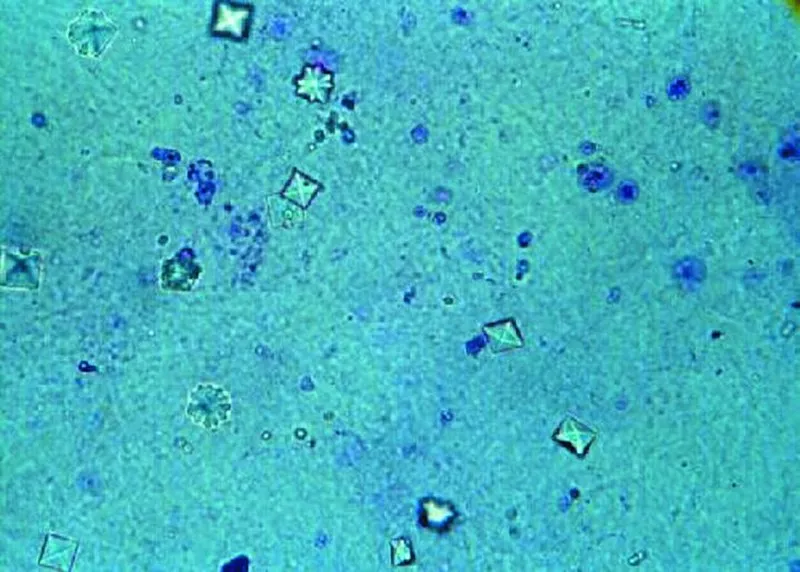 Calcium Oxalate crystal in urine sample
Calcium Oxalate crystal in urine sample
What you find in the sample (urine in this case) is dependent on the disease condition or state of health of the patient and it helps guide your diagnostic approach. Our sample under investigation for today is a urine sample from an adult female and we will be specifically looking at Unorganized urine deposit (e.g. Calcium oxalate). Let's discuss our results and findings.
Results and findings
After our microscopy, the results were quite interesting, and to cap it up, the patient was suffering from Schistosomiasis caused by the parasite specie Schistosoma haematobium. Fortunately, we have discussed this parasite in one of our previous episodes.
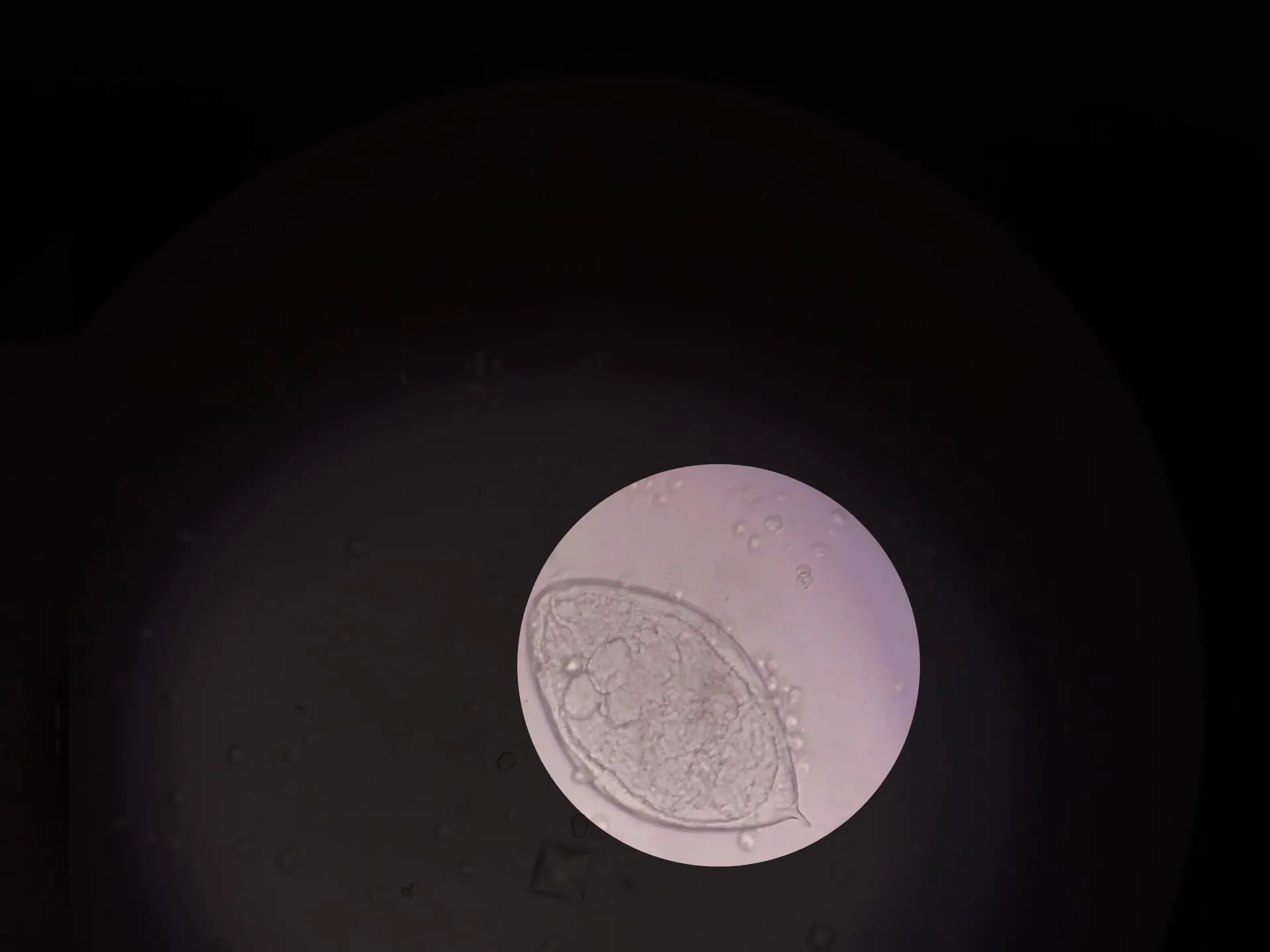 Egg of schistosoma haematobium
Egg of schistosoma haematobium
You can read more about this parasite by reading this post Medical laboratory workshop episode 1 relieving the moment with live parasite shistosoma haematobium. Reading the article will help you understand better how individuals are infected by this blood parasite and measures you can take to avoid being infected. Our focus is on the calcium oxalate crystals seen in the sample.
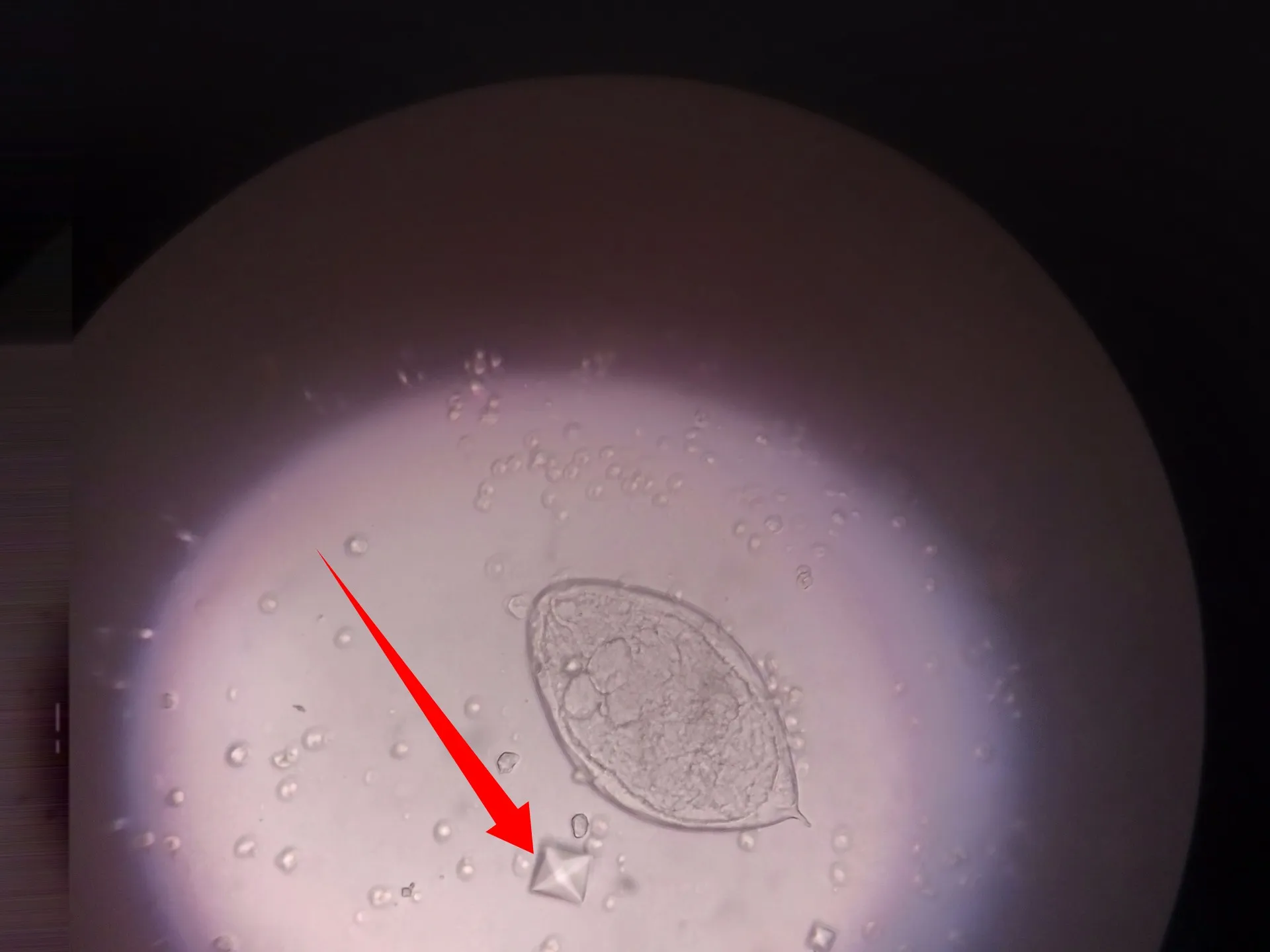 Calcium Oxalate crystal flanked by the egg of Shistosoma haematobium
Calcium Oxalate crystal flanked by the egg of Shistosoma haematobium
Considering the fact that the calcium oxalate crystals are not so much in abundance, we won't really say this is of significant clinical importance. The patient might be on drug. We will look deeply into this later as we progress shortly.
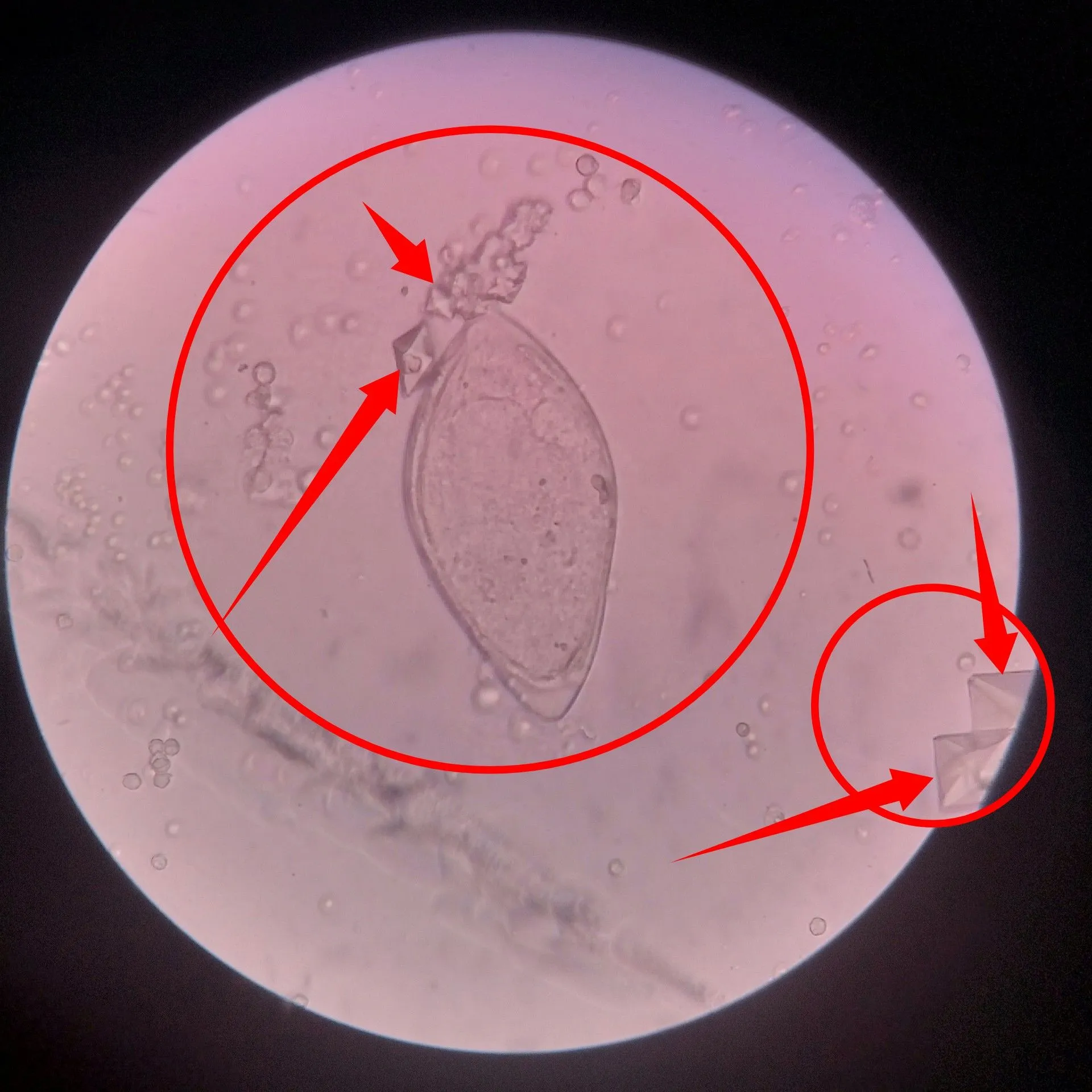 Magnified image of Calcium Oxalate crystals
Magnified image of Calcium Oxalate crystals
Clinical significance and indications
The presence of Calcium Oxalate crystals in the urine sample can mean a lot of things and one major clinical indication is kidney stone. There presence in the urine sample can also be as a result of the drugs. Most drugs contain calcium which serves as a binder to help hold the active ingredient in place. Some tablet drugs contain calcium and when you take this drugs, the calcium end up appearing in your urine.
Consumption of green leaf and vegetables are the major contributors to kidney stones because, these plants contain oxalate which when they combine with calcium, results to calcium oxalate crystals. If you are a consumer of vegetables, ensure you take enough water to dilute this minerals.
Lack of adequate water is the major contributor to the formation of kidney stones. The higher the acidity of your urine, the higher the chances of kidney stone formation. Acidity favours kidney stone formation.
The presence of calcium oxalate crystals is very common and generally has little clinical significance. They are found in urine with a pH between 6.0 and 7.0. The formation of calcium oxalate crystals can be caused by a combination of factors including decreased urine volume or a diet rich in oxalates (cabbage, rhubarb, spinach, tropical fruits, etc.) or calcium (dairy products). They are also found in individuals with calcium levels that are too high following prolonged immobilization, overactive parathyroid glands
Note that, the presence of Calcium Oxalate crystals does not always means that the patient is suffering from Nephrolithiasis (kidney stone). The presence of the Shistosoma haematobium eggs in the urine sample is an indication that the patient suffering from an infection which has obviously caused some discomfort. In s bid to relief the pain cause by the parasite's eggs, the patient might have taken some medication to alleviate the pain.
In essence, the calcium oxalate crystals seen the sample would likely be from the drugs taken by the patient or maybe through the food consumed.
In conclusion, it is always advisable to take enough fluids eating foods rich in vegetables, since they are the major source of this minerals. Complications arising from kidney stone can progress to a more life threatening diseases and even urinary tract infection if it is not treated on time.
In mild cases of kidney stones, consumption of atleast 5L of water daily will help dissolve the stones but in sever or chronic cases, surgery will have to be performed to break down the stones. Your urine colour says a lot about your health. Once you detect a deep colouration of your urine, it is advised that you take in adequate water. Diseases are better prevented than treated.
Always be intentional about your water drinking.
Stay safe!
References •Strategies for preventing calcium oxalate stones •Systematic evaluation for effects of urine pH on calcium oxalate crystallization, crystal-cell adhesion and internalization into renal tubular cells •Crystals in the Urine: What You Need to Know
Return from Medical Laboratory workshop Episode 5: Urine Deposits can predict your health status to cyprianj's Web3 Blog

